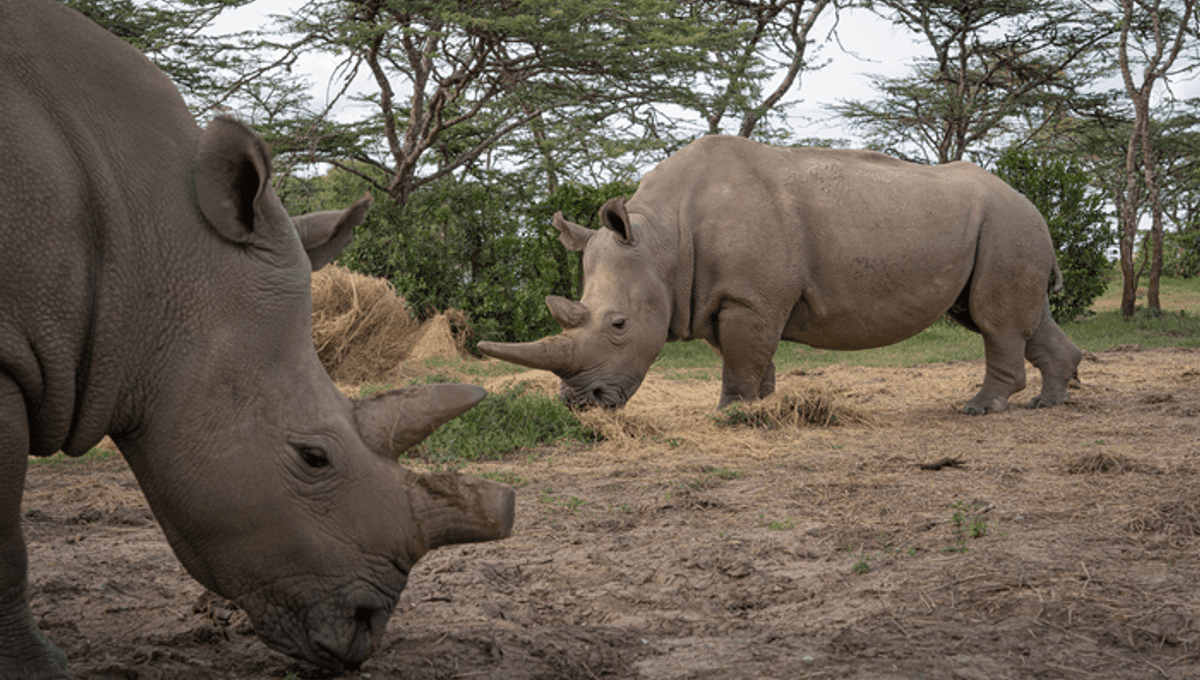
The Northern White Rhinoceros is a subspecies on the very edge of existence. Just two individuals remain alive after catastrophic poaching has wiped out the population. The last two surviving rhinos are both females; 33-year-old Najin, and her daughter, 22-year-old Fatu. You might think this would mean the end of the species entirely – but the team at The BioRescue Project, coordinated by the Leibniz Institute for Zoo and Wildlife Research (Leibniz-IZW), has other ideas.
With just two females of the subspecies left, they can obviously not reproduce on their own. The team is trying an incredibly ambitious method to save the northern white rhino from complete extinction. The process uses the skin cells of a deceased rhino to create sperm and egg cells. Once the sperm and egg cells have been made, the idea is then to create an embryo that would be implanted into a southern white rhino (a very closely related species) that would then carry the fetus to term.
While going from dead skin to living rhino calf may take some doing, the process has actually been done before in mice. However, for each new species, new challenges are faced along the way.
The skin cells came from Fatu’s aunt Nabire, who died in 2015. These cells were then converted into induced pluripotent stem cells by Dr Sebastian Diecke’s team at the Max Delbrück Center. That’s where some very clever genetic research comes in as the team has successfully cultivated primordial germ cells (PGCs) from these stem cells in a world first. These PGCs are the precursors to the rhino eggs and sperm that would be needed to create a new living northern rhino calf.
“This is the first time that primordial germ cells of a large, endangered mammalian species have been successfully generated from stem cells,” explains the study’s first author, Masafumi Hayashi of Osaka University in a statement.
A second method is also being suggested in a bid to save the species. The team wants to collect egg cells from 22-year-old Fatu and fertilize them using frozen sperm from deceased northern white rhino bulls. Unfortunately, due to health problems, Fatu would not be able to carry the resulting embryo and her mother is too old to do so either.
Therefore the next stage is to mature the newly created PGCs into viable egg cells.
“The primordial cells are relatively small compared to matured germ cells and, most importantly, still have a double set of chromosomes,” explains Dr. Vera Zywitza from Diecke’s research group, who was also involved in the study. “We therefore have to find suitable conditions under which the cells will grow and divide their chromosome set in half.”
While there still may be a lot of steps in the bid to save this species. The researchers hope the knowledge gained during this process can help other species in the future.
The paper is published in Science Advances.
Source Link: World-First Research Gets Closer To Creating Northern White Rhino Egg Cells To Save Species